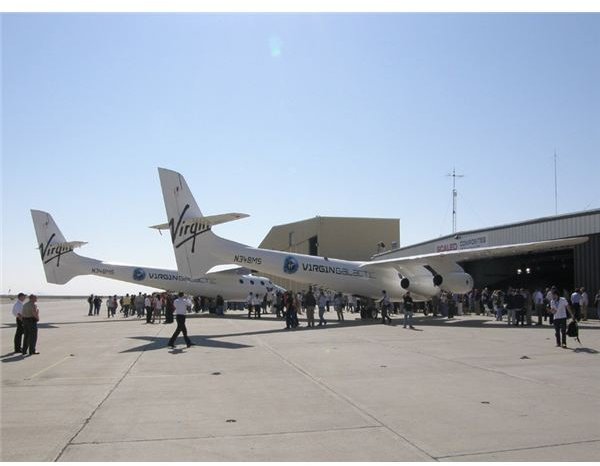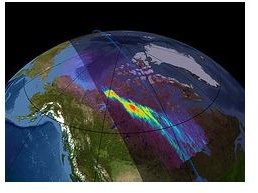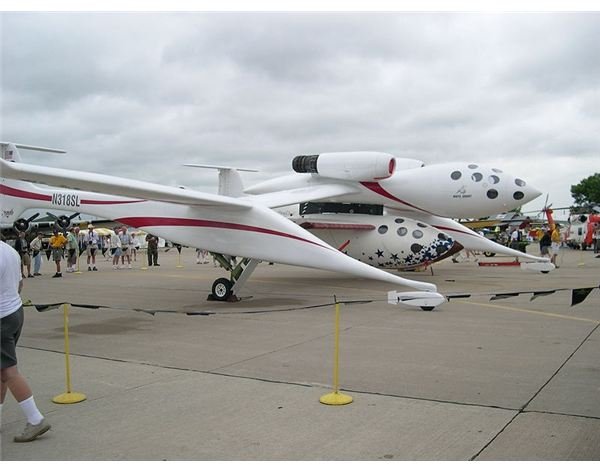Suborbital Transport – Will You See It In Your Lifetime?
A Step into Space Tourism
Who wouldn’t want a chance to rapidly accelerate to a 100 kilometers above the Earth, experience weightlessness and view the Earth from space? For a select few of the super-rich the dream of orbital space flight has already occurred. In the 1990s, Space Adventures began sending millionaires into space onboard the International Space Station. How much did this once in a lifetime space adventure cost? Over $20 million. For most, this price tag for space adventure travel is not reachable. However, a space travel option that is increasingly getting more attention and may be the first step into making space tourism a viable business is suborbital transport.
A suborbital flight refers to one where the vehicle crosses the border into space, but lacks the velocity to enter orbit around the earth. Instead, the craft will fall back down to the ground. Suborbital vehicles will be launched from spaceports that resemble conventional airports. These reusable launch vehicles (RLVs) differ in engineering design but typically feature rocket propelled engines. Launch methods range from vertical and horizontal takeoffs to air launch methods. Parabolic flights from a mother ship as well as crafts that resemble small airplanes are being designed for suborbital passenger flights.
The Beginning and Future of Suborbital Transport
The race into suborbital flight in the private sector was a little more than a dream until 2004 when SpaceShipOne became the first privately funded and manned spacecraft to complete space flight. With its successful space flight, SpaceShipOne won the Ansari-X prize. A competition awarding a $10 million prize to the first non-government company capable of creating and successfully completing two suborbital flights in a two week period with a crew of three on board.
Their success created large scale interest in creating affordable, advanced vehicles capable of safe suborbital transport for passengers and the commercial suborbital flight industry has wasted no time in launching commercial tourism. Large scale commercial suborbital passenger flights might take place as soon as 2011. Virgin Galactic has contacted with Scaled Composites, the company behind SpaceShipOne to design and develop spaceships modeled after the competition winning design.
Barriers to Commercial Suborbital Transport

For all those eagerly awaiting their chance to earn their space wings, suborbital flights might still be out of your price range. Space Adventures is offering suborbital flights at $120,000. While a two hour flight with Virgin Galactic will cost $200,000 with a refundable deposit of $20,000.
To stay in business companies will have to make suborbital flights profitable. Vehicles will have to be capable of holding multiple passengers and of handling multiple flights each week. Just like a first class airplane, RLVs have to cater to an audience that is paying well and expect superior accommodation. Large cabins for comfort, extensive windows and external cameras to capture the view are likely to be part of suborbital flight; as is the ability to be unstrapped from seats during the few minutes of weightlessness experienced at maximum altitude. All of these features may mean that in the short-term suborbital flight prices remain high.
Extensive travel by land, sea and air is already commonplace on Earth and available to everyone. Space travel on the other hand, has only previously been available to highly trained and skilled government astronauts who have spent years preparing for the experience. What will happen when those without any specialized skills are launched into space? Can the commercial suborbital transport survive a disaster on the scope of the Columbia space shuttle accident of 2003 where 7 crew members lost their lives?
Finding the Answers

Those pioneering into suborbital passenger flights have already answered some of these questions. Suborbital transport companies are expected to require passengers participate in some form of space camp or training center before flying into space. Virgin Galactic will require its passengers to undergo medical testing and take part in a 3 day pre-flight training program. To address public safety concerns spaceports will be located in low population areas with uncongested airspace.
The launch of suborbital passenger flights is expected to be only the first step into commercial space tourism. If the business model proves to be successful, the door will open for space hotels, private orbital transport and even space sports.
Sources
https://www.virgingalactic.com/flash.html?language=english
https://72.29.31.40/index.cfm?fuseaction=suborbital.welcome '
https://www.suborbitalinstitute.org/FAQ.html#A1
https://space.xprize.org/ansari-x-prize
https://www.spacetravels.gr/html/suborbital_gb.html
Image Sources
SpaceShipOne. (Photo by K. Daniel Hooper from Wikimedia Commons; Creative Commons Attribution ShareAlike 2.5; https://upload.wikimedia.org/wikipedia/commons/0/00/White_Knight_SS1_RH.jpg)
Virgin Galactic. (Photo by Akradecki from Wikimedia Commons; Creative Commons Attribution ShareAlike 3.0; https://upload.wikimedia.org/wikipedia/commons/b/b2/Vg-wk2-080728_%28148%29_cr8.jpg)
